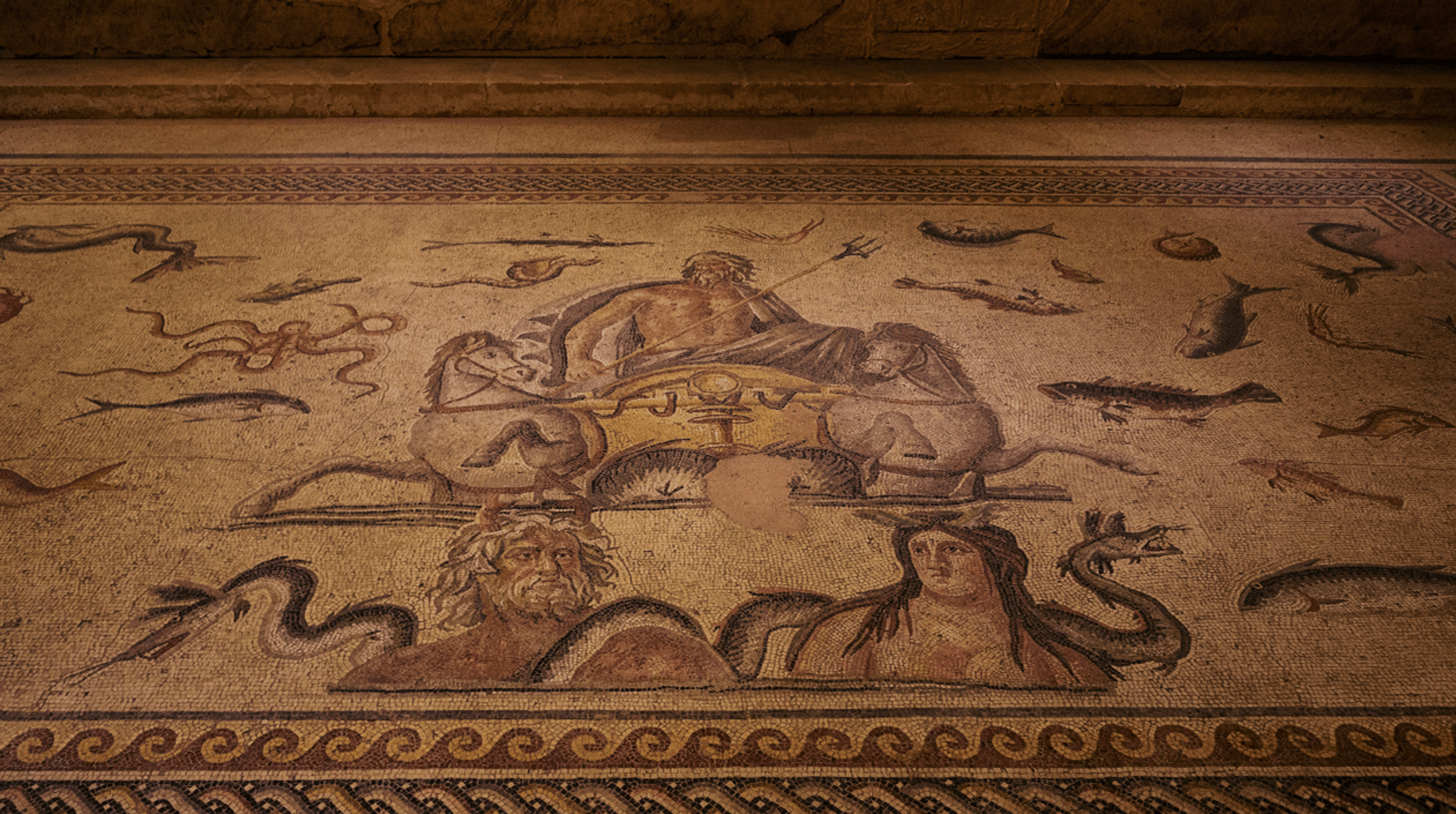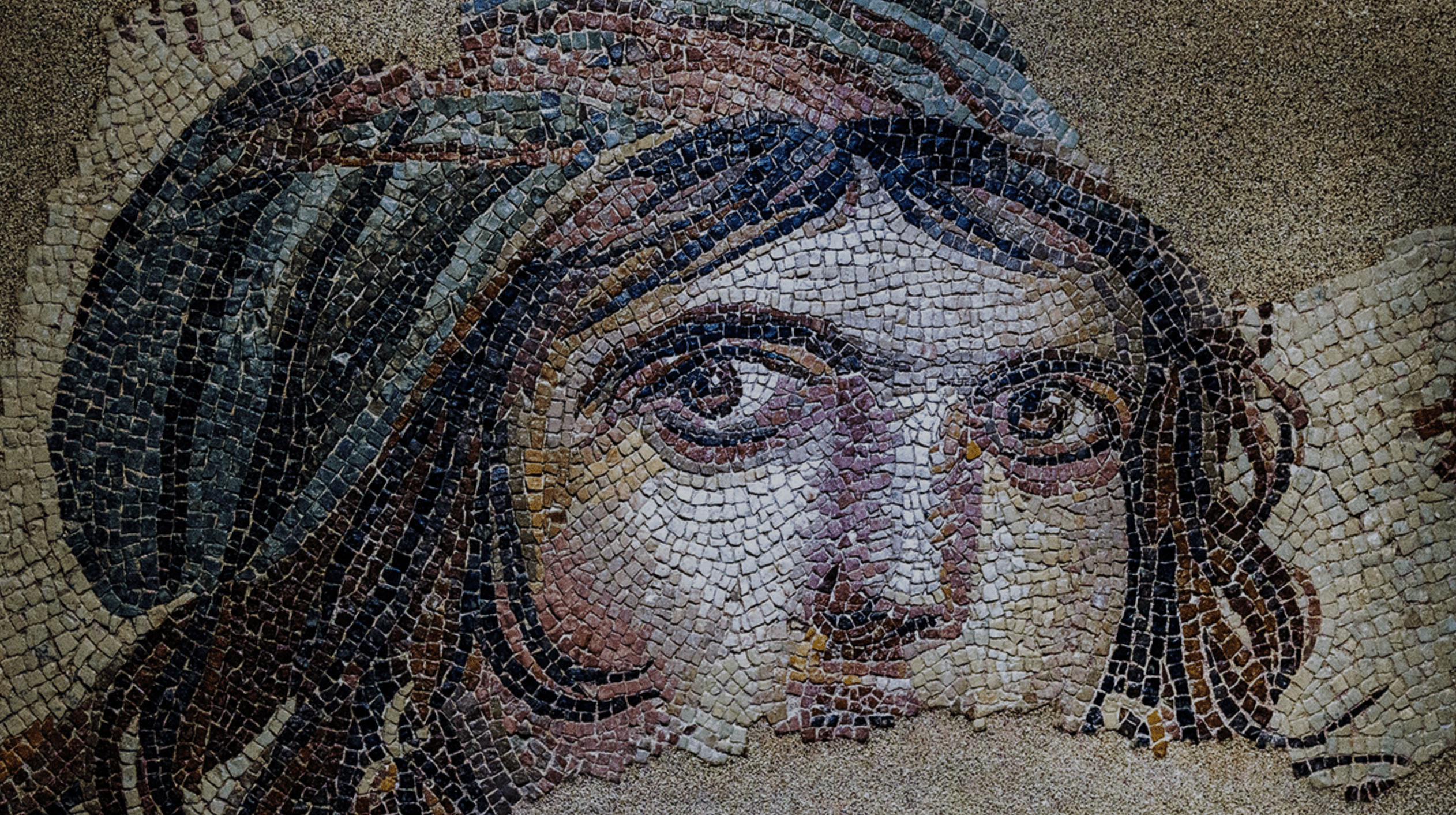
2.05.2025
6 Dakika
Zeugma, the largest city on the eastern border of the Roman Empire and located on the banks of the Euphrates River, maintained its grandeur until the 3rd century AD. The city — a very important commercial center with its strategic location — has survived to this day with unique structures in particular residential architecture. Among them are the remains of world-famous Roman villas, known for their unique floor mosaics and fine craftsmanship. In this blog, we’ll take a closer look at 5 must-see mosaics at the Zeugma Mosaic Museum in Gaziantep, which combine the artistic and cultural value of Zeugma with the reflections of its daily life.

This mosaic depicts the most famous divine figures associated with the sea in classical mythology, it is believed to be the floor of the swimming pool or dining room. In the middle of the mosaic, Poseidon rides a mythological creature with the front half of a horse and the rear half of a fish, called Hippocampus. The sea god Oceanus, and Tethys, who represents the fertility of the sea are also depicted at the bottom of the mosaic. It can be seen as a unique work of art that reveals how the citizens of Zeugma bring aesthetic expression into daily life.

One of the must-see mosaics at Zeugma is the mosaic depicting the kidnapping of Europa by Zeus, famously known as a flirtatious god in many mythological tales. This shows the moment when Zeus transforms into a golden bull to win Europa’s heart and carries her away, as she appears caught between surprise and excitement. It is valuable that highlights the importance of mythological storytelling in the lives of the people of Zeugma.

The identity of the girl in this mosaic — depicting a woman who attracts the attention of the whole world with her mysterious gaze and has become the symbol of Zeugma — is unknown. This figure, attracting curiosity with its impressive expression, resembled a gypsy girl, which is why the mosaic was given this name. On the basis of some details in the mosaic; however, it has also been suggested that she was an important originary figure in classical mythology, in a sense Gaia who is the mother of all gods and goddesses.

In a city located on the banks of the Euphrates River, it would be strange not to see a depiction of the mythological figure thought to have given it his name. In the mosaic, Euphrates — the god believed to have given the river his name through a tragic story — is depicted holding a jug under his elbow, symbolising the river’s source. This mosaic, engraved on the floor of a shallow octagonal pool, is also a must-see in the museum.

This mosaic, depicting an exceptional moment from the life of Achilles who is the famous hero of the Trojan War, stands among the prominent mosaics of Zeugma. The mosaic captures the moment Achilles — disguised as a woman and hidden on an island by his parents to keep him from going to war — is revealed who he really is by another legendary hero, Odysseus. As one of the subtle works of Roman art, it is awaiting to be seen at the Zeugma Mosaic Museum.
Zeugma Mosaic Museum is a unique cultural spot for history enthusiasts and curious travellers, bringing the glorious legacy of the Roman Empire on the banks of the Euphrates River to the present day. To learn more about this ancient city and museum — filled with magnificent works of art and fascinating remains — be sure to check out our blog titled “Time Capsule of Ancient Roman Art: Zeugma.”